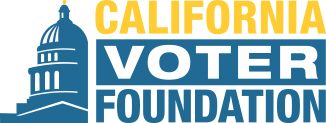Excepts:
The June 7 primary in Los Angeles County cost $82.2 million, requiring 12,000 election workers to administer an election in which 597 total candidates were seeking 155 offices with voting taking place by mail at more than 600 vote centers. All this in a county of 5.6 million registered voters.
But there was one missing ingredient — or at least not enough of it, based on the early numbers — in this simmering recipe of democracy: Voters.
Just more than 1 in 5 voters cast ballots in L.A. County, according to Tuesday stats rom the L.A. County Registrar-Recorder/County Clerk. And the turnout statewide, was at 26%.
Time to throw in the towel on the open primary?
No, says the system’s chief co-designer Steve Peace, the former San Diego-County assemblyman who designed California’s top-two primary, governing state and congressional elections.
In fact, it’s just the time to build on what he still believes is a well-intended system, with some needed improvements.
“The whole purpose is to empower individual voters,” said Peace last week, reflecting on the election that just was.
But why even have a primary if relatively few people vote?
- - - - - - - - - -
“If there’s anything disappointing in any of the data we’re seeing it is the fact that in my district there’s 130,000 registered Republicans — and we’re going to see fewer than 40,000 of them vote,” Garcia said.
“It’s difficult for me to fathom why someone would not engage in this environment as a conservative,” he said. “The fact that we’ve got 90,000 to 100,000 Republicans still sitting on the sidelines is a little concerning to me. I don’t know what motivating factors you need in order to get out and vote.”
Turnout — or rather, the lack of — is a concern for Kim Alexander, too.
Alexander, the president of the nonpartisan California Voter Foundation, notes that the top-two primary was well-intended. But it may have expected too much.
“I think sometimes we get a little too creative for voters,” Alexander said. “Keeping things simple is better.”
Voter literacy is vital, she said, because when “you’re not voting, politicians don’t see you as a threat. That cycle continues as long as you’re not voting.”
What’s worse, though, is how the lack of voting gets baked into the political culture. “Campaigns are not focused on getting everyone’s vote. They are focused on the people most likely to vote,” Alexander said.
That creates an unsettling kind of acceptance, experts say.
“We’ve created an acceptance of low turnouts in primaries,” said researcher Mindy Romero, founder and director of the Center for Inclusive Democracy, part of USC Sol Price School of Public Policy.
The consequences, she said, are “huge,” resulting in a “small proportion of people making the decisions for everybody and setting the ballot in November for all of us.”
It’s not about apathy, she said. “It’s about voters not knowing sometimes if there is a primary and why it matters.”
Jaime Regalado, professor emeritus of political science at California State University, Los Angeles, noted that without an “exciting” race at the top — and amid cultural firestorms that have left the electorate reeling to some degree — the low turnout could be anticipated. Primaries, he said, have woeful participation as it is.
Peace is backing reforms that gradually build on the open primary system, including a top-four system fused with “ranked-choice voting” — a system in which four candidates on the primary ballot, instead of two, advance to the general election. (Full Story)

